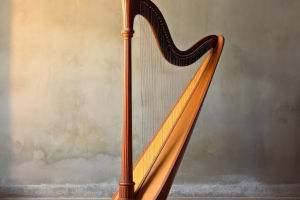The saxophone, with its smooth curves and rich, resonant tones, is more than just a musical instrument-it's an icon.
Whether it's the sultry sounds of jazz, the energetic bursts in rock, or the haunting melodies in classical music, the saxophone has a unique ability to convey emotion like no other.
Let's take a closer look at this versatile instrument, from its origins to its modern-day impact on music.
The Birth of the Saxophone
A Revolutionary Creation: The saxophone was invented in the 1840s by Adolphe Sax, a Belgian instrument maker who sought to create an instrument that combined the power of brass with the expressiveness of woodwinds. His creation, the saxophone, became the first new instrument added to the orchestra in over a century. Sax's innovation quickly caught the attention of musicians, and it wasn't long before the saxophone found its place in army bands, orchestras, and eventually, jazz.
The Sax Family: The saxophone family consists of several different sizes, each with its own unique voice. The most common types are the soprano, alto, tenor, and baritone saxophones. The alto and tenor saxophones are the most popular, especially in jazz and rock music. The soprano saxophone has a higher, more piercing tone, while the baritone saxophone produces deep, resonant sounds. Together, they create a rich, layered soundscape that can range from soft and mellow to loud and brassy.
Mastering the Saxophone
The Basics: Learning to play the saxophone requires mastering the art of breath control, finger positioning, and embouchure (the way you shape your mouth on the mouthpiece). It’s an instrument that demands both precision and passion. For beginners, the alto saxophone is often recommended due to its manageable size and ease of play. However, each saxophone type has its own learning curve, and many players eventually try them all.
Practice and Dedication: Like any instrument, becoming proficient on the saxophone takes practice and dedication. Saxophonists often spend hours perfecting their tone, scales, and improvisation skills. The instrument's ability to bend notes and produce a wide range of dynamics makes it particularly rewarding for those willing to put in the time.
Saxophone in Jazz: A Love Affair
The Heart of Jazz: The saxophone's rise to fame is inextricably linked with the birth of jazz in the early 20th century. Musicians like Charlie Parker, John Coltrane, and Lester Young revolutionized the way the saxophone was played, using it to express complex emotions and push the boundaries of music. The saxophone became the voice of jazz, capable of mimicking the human voice, crying, laughing, and even screaming.
Improvisation and Innovation: In jazz, the saxophone is often used for improvisation, allowing players to create spontaneous, original music on the spot. This freedom of expression is one of the reasons the saxophone is so beloved in the jazz community. Saxophonists can bend notes, vary their vibrato, and experiment with different techniques to produce unique sounds that resonate with audiences.
Saxophone in Popular Music
Beyond Jazz: While the saxophone is most closely associated with jazz, its versatility has made it a staple in many other genres. In rock and roll, the saxophone adds a raw, energetic edge, as heard in songs by artists like Bruce Springsteen and David Bowie. In pop music, it provides a smooth, melodic line that enhances the overall sound. The saxophone has even found its way into classical music, where composers like Ravel and Debussy have used it to add depth and color to their works.
Modern Appeal: The saxophone's appeal continues to grow, with contemporary artists incorporating it into a wide range of musical styles. From electronic music to indie rock, the saxophone's unique voice remains relevant and fresh.
Caring for Your Saxophone
Maintenance: Keeping a saxophone in top playing condition requires regular maintenance. This includes cleaning the mouthpiece, checking the pads, and ensuring the instrument is properly assembled and disassembled. Regular oiling and occasional trips to a professional repair technician can also extend the life of the instrument.
Choosing the Right Saxophone: When selecting a saxophone, it’s important to consider your skill level, musical preferences, and budget. Beginner saxophones can start around $400, while professional models can range into the thousands. Brands like Yamaha, Selmer, and Conn are renowned for their quality and craftsmanship, offering options for every level of player.
The saxophone is more than just an instrument; it's a vehicle for expression, capable of conveying the deepest emotions and creating unforgettable musical experiences. Whether you’re drawn to the soulful sounds of jazz, the vibrant energy of rock, or the timeless beauty of classical music, the saxophone has something to offer. Its rich history, diverse range of sounds, and continued relevance in modern music make it a beloved instrument for musicians and listeners around the world.


